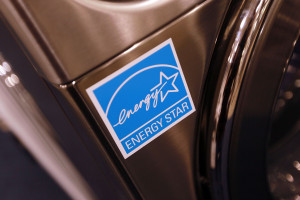
These days, everyone is looking for the best return on investment, whether from the bank, stock market or items they buy for the home. More and more consumers are discovering that ENERGY STAR qualified products have a very good return on investment.
Take your washing machine as an example. According to Natural Resources Canada (NRCan), an ENERGY STAR qualified washing machine uses 20-50 % less energy and 35-50 % less water than a conventional model. How does that translate to cost savings? Read on!
NRCan breaks the the savings down for us:
A regular washing machine uses an average of 374 kWh a year. This translates into an annual energy cost of $37.40.
An ENERGY STAR qualified washing machine uses an average of 202 kWh a year: an annual energy cost of $20.20.
That is a big energy savings and a cost savings of $17.20 a year on the electricity powering the washer alone!
(Tip: If you use a gas-fired water heater or always use the cold water cycle, the costs will be even lower.)
ENERGY STAR qualified washing machines also remove more water from the clothes and shorten drying time for each load so you would also save money by reducing the amount of electricity used by your clothes dryer.
Buying energy-efficient appliances helps reduce air pollution and greenhouse gas emissions that contribute to climate change. The end result is more money in your pocket and a better environment for everyone, including future generations. Contact us at National Home Services to learn more about installing energy efficient products in your home!



